Nurota
Nurota
In the ‘Royal Road’, north of the featureless Samarkand–Bukhara road, the Pamir-Alay Mountains offer one final sign of life on the map before fading unceremoniously into desertified insignificance. Nurata Mountains, topping only with the height of 2169 m, are quickly becoming the center of Uzbekistan’s growing ecotourism movement. Therefore, modest Nurota (or Nurata) town makes a consistent base for jumping off to the mountains or one of several nearby yurt camps.
Nurata city is surrounded by the Nuratau Mountains and is home not only to a fortress possibly built by Alexander the Great but also a medieval pilgrimage site supposedly linked to Hazrat Ali. The city also serves as a transport hub as well as an occasional overnight stopover for those who are camel trekking in the Kyzylkum Desert or trekking and birdwatching in the remarkably unspoiled Nuratau Kyzylkum Biosphere Reserve.

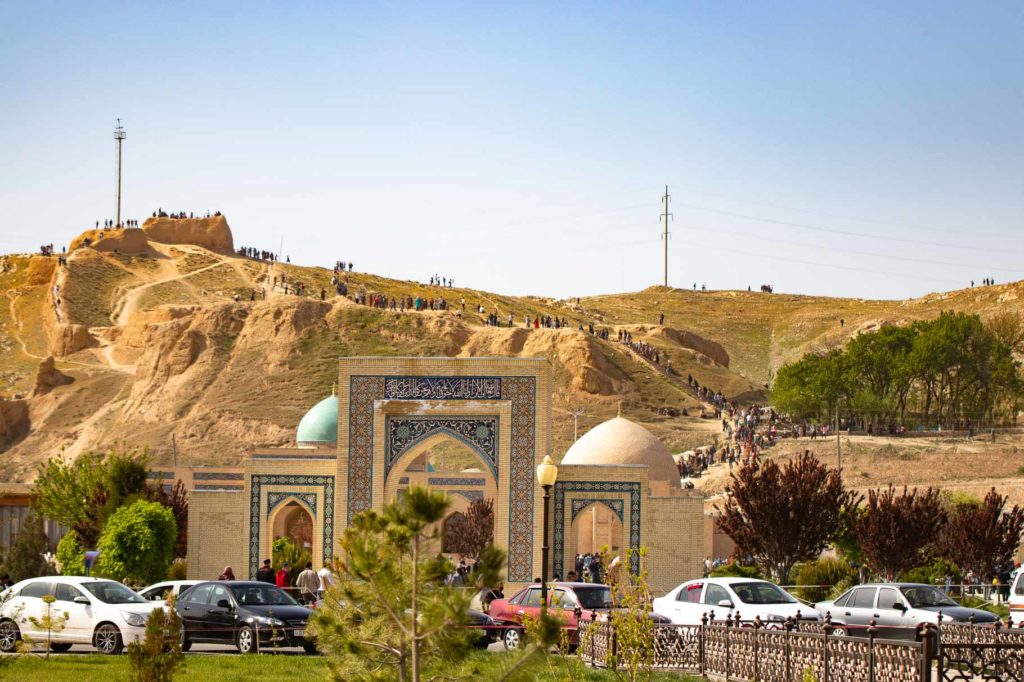
According to folk tales, a brightly shining meteorite fell to this place 40 thousand years ago. Therefore the name of the city refers to this event called “Nur” meaning “light”, and “Ota” meaning “father” making it “Father of light”. Residents of Nurata believe that the city was founded as Nur by Alexander the Great in 327 BC.
Locals credit Alexander with building the hilltop fortress and also being responsible for the complex canal water system that brings drinking water several kilometers from a spring right into the center of the town. These channels are commonly called “kariz” and they were once widespread in many cities of Central Asia. Nurata kariz is one of the few that have remained to this day and it is still used by the local population, as it was hundreds or even thousands of years ago.
Nurota town has operated as a strategic position on the frontier between the cultivated lands and the steppe already for ages. Today, it is home to 30 000 people and famous for marble and astrakhan fur production and lately Nurata has become one of the holy sites that attract pilgrims from all over Central Asia.
Highlights of Nur0ta
Alexander's Fort
Alexander’s Fort is also known as fortress Nur and is strategically located on the top of a hill, south from the old monumental part of Nurota. According to the Uzbek sources, Alexander the Great commanded one of his generals to build an impassable fortress here while he continued his conquest of Bactria and Sogdiana.
When Alexander returned, the structure was such powerful that his troops could neither break down the gates nor climb the walls. The walls were just too steep to climb. What appears now to be clay underfoot, is in fact, adobe bricks, compacted by thousands of feet and the elements over two millennia.
The path up the fortress is quite steep but there are stairs that are just a little bit hidden. Climbing up to the top you can enjoy the city from a bird’s eye view. Walking around the hills you can also observe the art made by local young people, setting out names and inscriptions with stones.
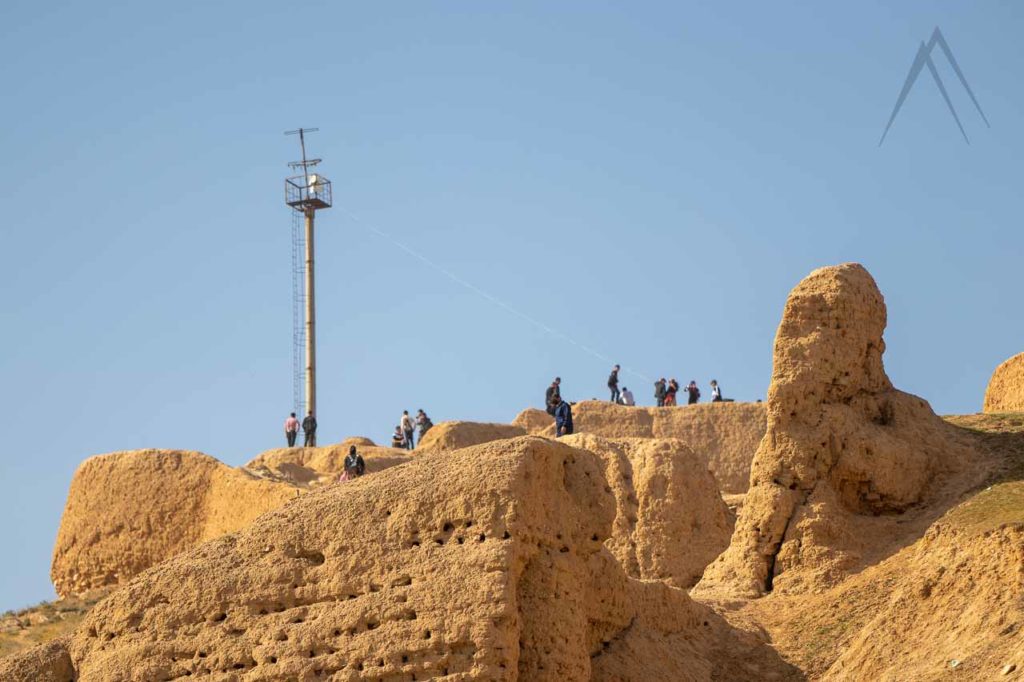
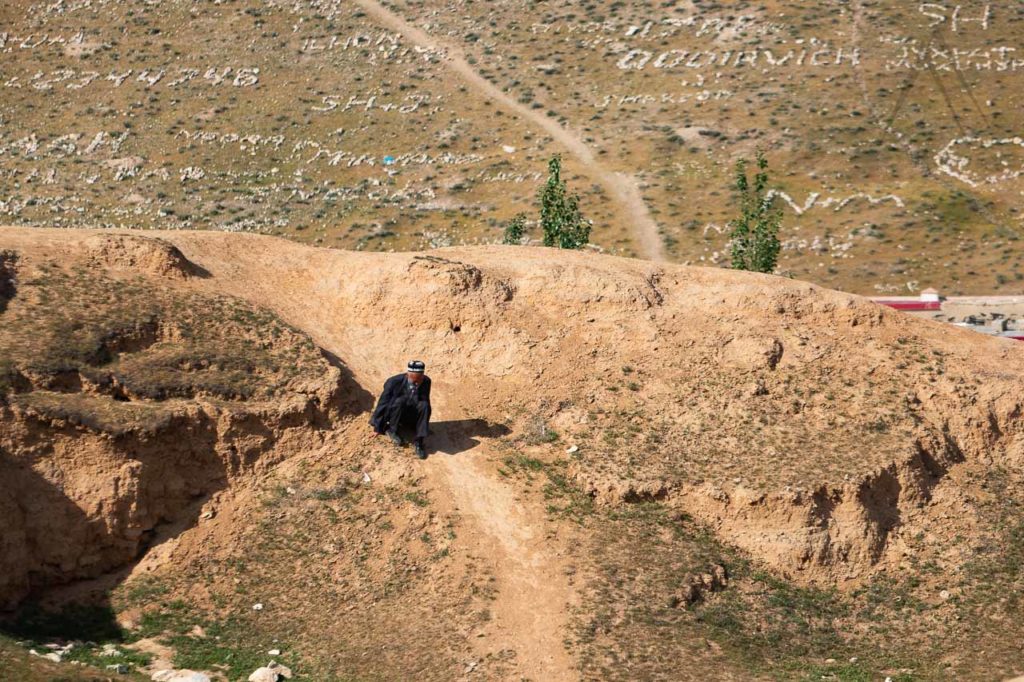
Nurota Сhashma Сomplex
Complex Chashma, that is also known as Nur-Bulak is one of the most ancient and revered sacred places in Central Asia. The complex includes a Juma Mosque, Namozgokh Mosque, Nur-Ata Mazar, a spring with water, a museum and a bathhouse. It is a place of pilgrimage for the faithful and an important religious center in the area.
Back in the 10th AD century, the Islamic historian Abu Bakr Muhammad ibn Jafar Narshahi (899-959) described Nurata as a place of mass religious worship in his work “History of Bukhara”. Author’s note: “Nur is a large village, there are a cathedral mosque and many rabats (fortified structures).
Every year residents of Bukhara and other areas go there to worship shrines and consider this journey very soul-saving for themselves. They even say that one who goes to worship in Nur performs the same godly and salutary work as the Hajj.
Chashma Spring
Nurata became significant again at the start of the Islamic era as it has been said that Hazrat Ali, son-in-law of the Prophet Muhammad struck the ground here with his staff, and the Chashma Spring bursted out. Hundreds of holy trout still swim in the mineral-packed water coming from the spring. The ‘holy’ fish live in the mineral-laden waters of the spring and the canals connected to it.
There is also a well called Beshpaja (which means five fingers, palm- the hand of God). The well has been well preserved to this day and it was fortified with untreated boulders. The bottom of the well with its outlines resembles the back of the hand, and according to local theologians, it has a clear similarity to the calligraphic style of the word “Allah”.
The water in this source runs all year round and it has the stable temperature of 19.5 degrees Celsius. The water contains many useful elements like silver, iodine, bromine, gold, etc. which allegedly have a beneficial effect on the human body and strengthen its nervous system. It is also said that the water is healing and helps with all diseases. You can grab a bottle of it but it is better to judge by yourself if it is worth it.
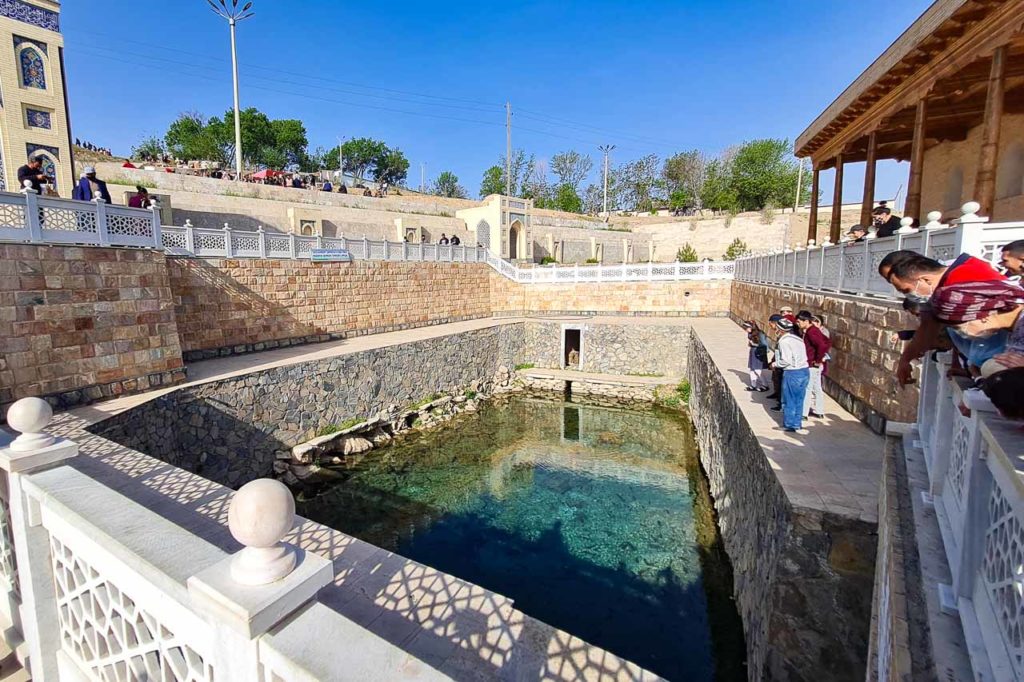
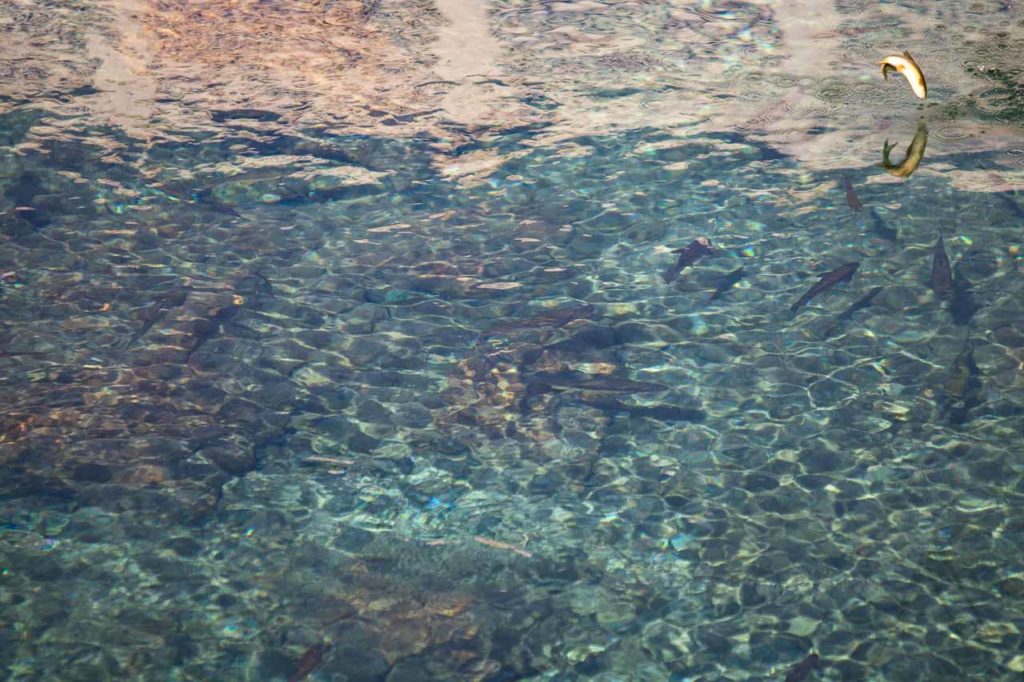
Nurata Juma Mosque
By the spring is the Juma Mosque, first built in the 10th century to accommodate visiting pilgrims. The mosque has been rebuilt several times; the current structure (mostly 16th century) has 25 cupolas, one of which has a diameter of 16m and hence is amongst the largest in Central Asia.
Muhammad Nurata Mausoleum & Mazar
Mausoleum of Muhammad Nurata lies by the traces of the prophet Nur-Ata next to a Mazar where Nur-Ata’s wife and mother are buried.
Aiteke bi Mausoleum
Aiteke bi mausoleum is considered a sacred place for the residents of Nurota. Aiteke bi was from the Alchin clan (1644-1700). He was a public figure who contributed to the formation of the Kazakh Khanate. The mausoleum was built in 2012 and is located in the west part of the Nurata next to the cemeteries. It should be noted though that according to other sources, Aiteke-bi is buried 75 kilometers from Tashkent, near the city of Chinaz.
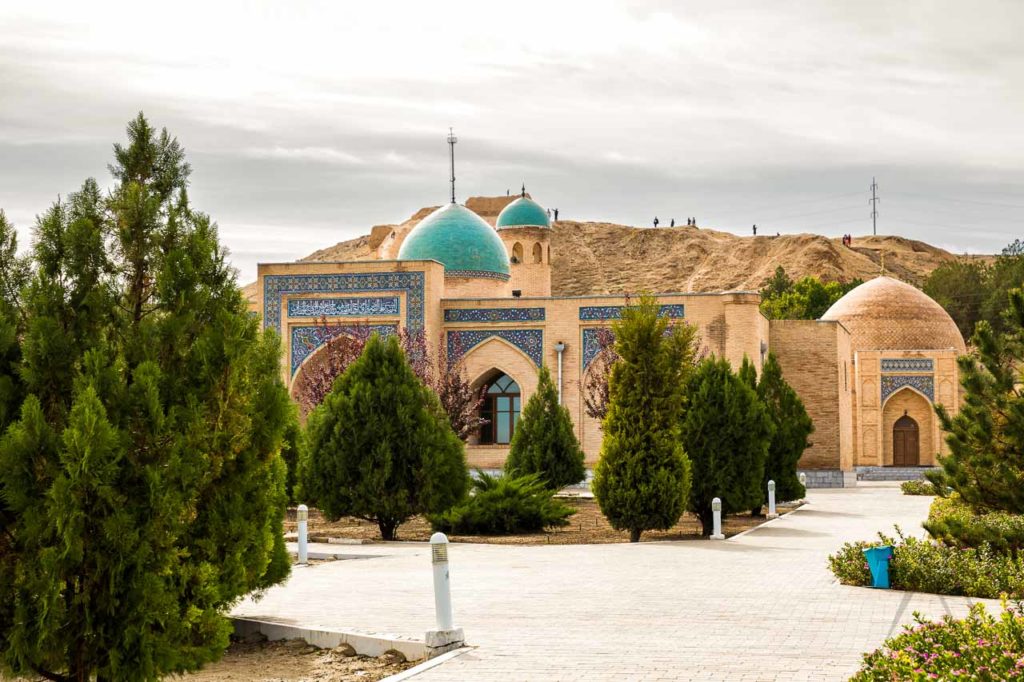

Nurata Yurt Camp
If you wish to get out of the cities to a more quiet area, a yurt camp could be the perfect place. Nurata yurt camp is located 60 km from Nurata, near the village of Donglek, in the middle of the sands of the Kyzylkum desert and 7 km west from the shores of Aydarkul lake. On the way to the Yurt camp, you can visit the “stone picture gallery” meaning petroglyphs of an ancient man in the Sarmysh tract. Here, on the black basalt rocks, more than 3 thousand drawings were discovered – petroglyphs depicting animals, people, hunting scenes and everyday life.
Yurts in the village are decorated with hand-made carpets and “shirdaks” of local craftsmen in an unusually expensive setting. A pleasant atmosphere in the yurts is also produced by woven patterns and even chandeliers. The yurt camp is equipped with stationary toilets and showers. The evenings can be spent by the fire with the songs of a local “akyn” (an epoch singer), admiring the peaceful atmosphere and making wishes for the shooting stars.
Travel to Nurota
Nurota is a good place to sleep for a night between Jizzakh and Navoi or while traveling to the western part of the Aydarkul lake. It is also not that far from Bukhara and provides an alternative road to/from there if you wish to avoid the more crowded path towards Samarkand. THere are no train tracks or airport here so cars, buses and marshrutkas are the only options to reach Nurota.
Sights & destinations near Nurota
Page updated 27.2.2021